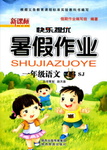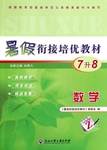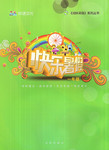题目内容
Butter and bread ____their daily food, but the bread and the butter ______ up now.
A. is; is eaten B. are; have been eaten
C. are; are eaten D. is; have been eaten
D

 新课标快乐提优暑假作业陕西旅游出版社系列答案
新课标快乐提优暑假作业陕西旅游出版社系列答案 暑假衔接培优教材浙江工商大学出版社系列答案
暑假衔接培优教材浙江工商大学出版社系列答案 欣语文化快乐暑假沈阳出版社系列答案
欣语文化快乐暑假沈阳出版社系列答案Tea drinking was common in China for nearly one thousand years before anyone in Europe had ever heard about tea.People in Britain were much slower in finding out what tea was like, mainly because tea was very expensive. It could not be bought in shops and even those people who could afford to have it sent from Holland did so only because it was a fashionable curiosity. Some of them were not sure how to use it. They thought it was a vegetable and tried cooking the leaves. Then they served them mixed with butter and salt. They soon discovered their mistake but many people used to spread the used tea leaves on bread and give them to their children as sandwiches.
Tea remained scarce and very expensive in England until the ships of the East India Company began to bring it direct from China early in the seventeenth century. During the next few years so much tea came into the country that the price fell and many people could afford to buy it.
At the same time people on the Continent were becoming more and more fond of tea.Until then tea had been drunk without milk in it, but one day a famous French lady named Madame de Sevigne decided to see what tea tasted like when milk was added.She found it so pleasant that she would never again drink it without milk. Because she was such a great lady her friends thought they must copy everything she did, so they also drank their tea with milk in it. Slowly this habit spread until it reached England and today only very few Britons drink tea without milk.
At first, tea was usually drunk after dinner in the evening No one ever thought of drinking tea in the afternoon until a duchess (公爵夫人) found that a cup of tea and a piece of cake at three or four o’clock stopped her getting “a sinking feeling” as she called it. She invited her friends to have this new meal with her and so, tea-time was born.
1.Which of the following is true of the introduction of tea into Britain?
|
A.The Britons got expensive tea from India. |
|
B.Tea reached Britain from Holland. |
|
C.The Britons were the first people in Europe who drank tea. |
|
D.It was not until the 17th century that the Britons had tea. |
2.This passage mainly discusses_____________.
|
A.the history of tea drinking in Britain |
|
B.how tea became a popular drink in Britain |
|
C.how the Britons got the habit of drinking tea |
|
D.how tea-time was born |
3.Tea became a popular drink in Britain_____________.
|
A.in eighteenth century |
B.in sixteenth century |
|
C.in seventeenth century |
D.in the late seventeenth century |
4.People in Europe began to drink tea with milk because_____________.
|
A.it tasted like milk |
|
B.it tasted more pleasant |
|
C.it became a popular drink |
|
D.Madame de Sevigne was such a lady with great social influence that people tried to copy the way she drank tea |
5.We may infer from the passage that the habit of drinking tea in Britain was mostly
due to the influence of ________.
|
A.a famous French lady |
B.the ancient Chinese |
|
C.the upper social class |
D.people in Holland |